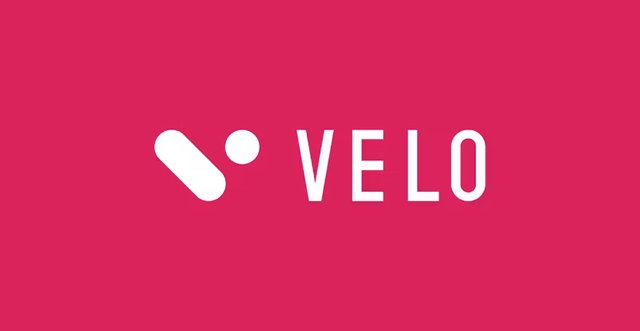
As decentralized finance (DeFi) continues to gain traction and revolutionize the financial landscape, various projects are competing to offer innovative solutions and capture market share. One such project is Velo, a next-generation platform built on the Optimism Layer 2 solution, which has garnered significant attention for its unique approach to providing deep liquidity and low slippage swaps.
In this article, we will delve into the world of Velo, exploring its origins, key features, risks and merits as an investment, and how it compares to other DeFi platforms.

What is Velo?
Velo is the native utility token of the Velodrome platform, an automated market maker (AMM) protocol operating on the Optimism Layer 2 solution. Velodrome, which has its roots in the veDAO project, was established following the collapse of the Solidly project on the Fantom blockchain. By learning from Solidly's shortcomings and integrating innovative mechanisms, Velodrome aims to provide deep liquidity, low slippage swaps, and support the growth of the Optimism ecosystem.
As the lifeblood of the Velodrome platform, VELO tokens serve a critical role in the platform's unique vote-escrow model and liquidity provision system. By locking VELO tokens for a predetermined period, users receive veVELO, which grants them voting power to direct liquidity emissions to specific pools.
Consequently, VELO token holders have a direct influence on the platform's operations and can earn rewards from the fees and bribes collected by the pools they support. This innovative approach ensures that liquidity emissions are tied to trading volume, generating more value for the ecosystem and attracting more users to deposit liquidity.
Related: What is Amp Cryptocurrency?
How Does Velo Work?
The Velo token operates within the Velodrome ecosystem by allowing users to lock their tokens for a set duration, ranging from one week to four years, in exchange for veVELO tokens, which in turn grant voting power. Users receive more veVELO tokens based on the length of their lock period, enabling them to have a greater say in the distribution of liquidity emissions.
Furthermore, the locked VELO positions are represented as veNFTs (non-fungible tokens), which can be traded on NFT marketplaces, enhancing the utility and tradability of locked tokens.
Once VELO tokens are locked, users can exercise their voting power to allocate liquidity emissions to specific pools. Velodrome distributes these emissions proportionally based on the votes received by each pool. In return, voters gain 100% of the fees and bribes associated with the pools they have supported.
This mechanism ensures that VELO emissions are directed towards pools that offer the most value to the ecosystem, benefiting both liquidity providers and the protocols that pay out bribes to incentivize liquidity provision.

Who Invented Velo?
Velo was initially conceived as veDAO, a project that aimed to capitalize on the Solidly protocol created by Andre Cronje, a well-known DeFi developer and the creator of Yearn Finance. Solidly was designed to operate on the Fantom blockchain, but following the announcement of Andre Cronje's departure from the crypto world and the subsequent collapse of the Fantom ecosystem, veDAO pivoted its focus and adapted to the changing landscape.
The veDAO team transitioned their efforts to the Optimism Layer 2 solution, one of the most promising Ethereum scaling technologies, and rebranded their project as Velodrome. The team took the best elements of Solidly and addressed its shortcomings, resulting in a robust and dominant decentralized exchange (DEX) that now commands a significant portion of the Total Value Locked (TVL) on the Optimism chain.
The team behind Velodrome remains relatively anonymous, focusing on building a strong, decentralized protocol that benefits the broader ecosystem.
Related: Altcoin Spotlight: Lido DAO (LDO)
Should You Buy Velo?
When considering an investment in Velo, it's essential to weigh both the risks and merits associated with the project. On the positive side, Velodrome has demonstrated a strong presence within the Optimism ecosystem, holding a significant share of the Total Value Locked (TVL) on the chain.
The innovative features of the platform, such as the vote-escrow model and concentrated liquidity pools, position it as an attractive option for DeFi users seeking deep liquidity and low slippage swaps. Additionally, the upcoming launch of Velodrome V2.0 promises further improvements and new features that could potentially boost the utility and adoption of the VELO token.
However, as with any cryptocurrency investment, there are risks involved. The DeFi space is highly competitive, and the success of Velodrome largely depends on its ability to maintain and expand its user base amidst constant competition from other projects.
Moreover, the project's anonymous team could be perceived as a risk by some investors, as it may be challenging to hold them accountable for the platform's performance or security. Regulatory uncertainty surrounding the DeFi and cryptocurrency landscape may also impact the long-term prospects of the project.
Ultimately, it is crucial for potential investors to conduct thorough research, evaluate the risks, and assess the merits of the VELO token before deciding whether to include it in their investment portfolio.
Alternatives to Velo
While Velo has made a name for itself within the Optimism ecosystem, there are several other DeFi platforms that could serve as alternatives for those looking to diversify their investments. Some notable competitors include Uniswap, a highly popular Ethereum-based decentralized exchange with a similar automated market maker (AMM) model and concentrated liquidity pools in its version 3, and Curve Finance, a stablecoin-focused AMM that offers deep liquidity and low slippage for stablecoin swaps.
Other platforms such as SushiSwap, Balancer, and Bancor also offer unique features and competitive advantages within the DeFi landscape. Investors seeking exposure to the broader DeFi market should consider researching and comparing these alternatives to determine which projects align best with their investment goals and risk tolerance.
Velo has emerged as a major player within the Optimism ecosystem, offering a novel approach to DeFi by combining features from successful predecessors and addressing their shortcomings. As with any investment, potential investors should carefully weigh the risks and merits of Velo and consider alternative DeFi platforms to make informed decisions.
The world of decentralized finance is continuously evolving, and projects like Velo are reshaping the way people interact with financial services, ultimately bringing us closer to a more transparent, efficient, and inclusive financial future.
You May Also Enjoy: Uniswap (UNI) ERC-20 DEX Overview
This article was brought to you by the BitRocket Bitcoin Crash Game on MintDice. Originally posted to the MintDice Blog.